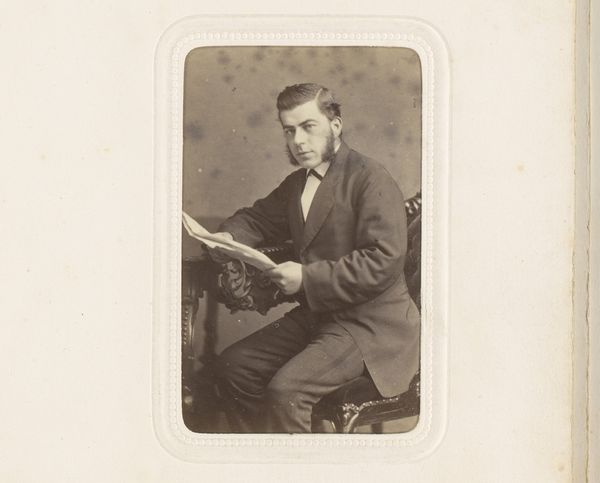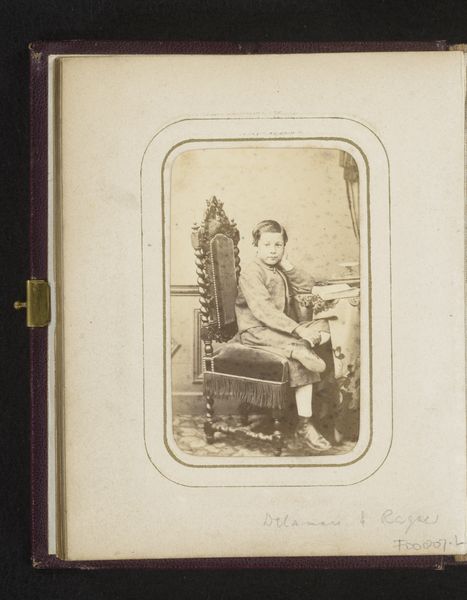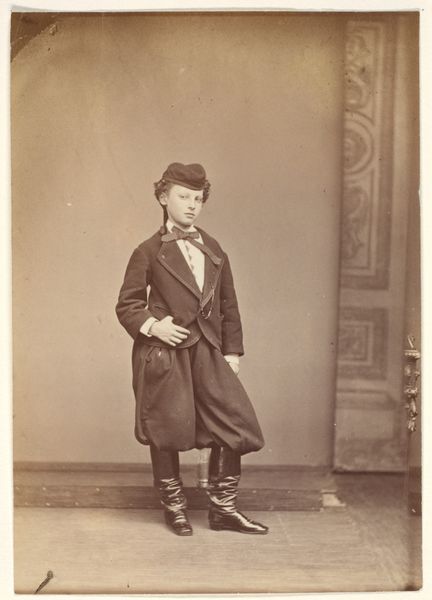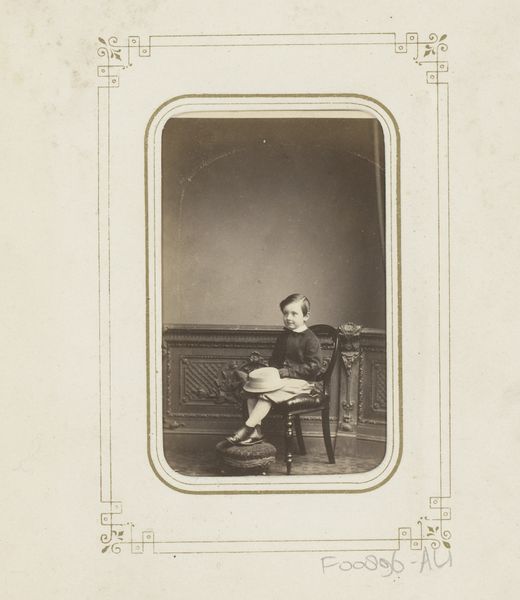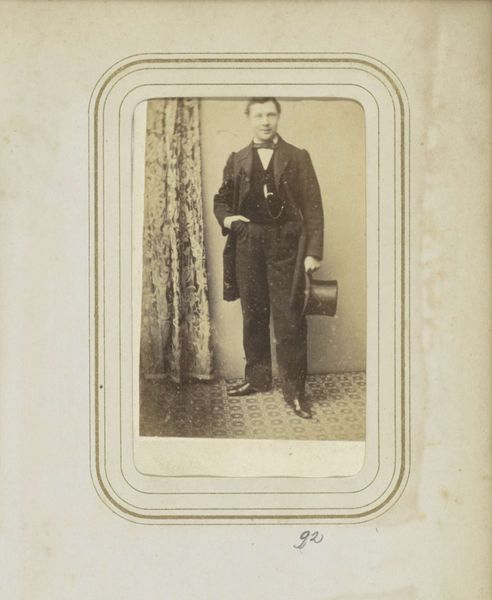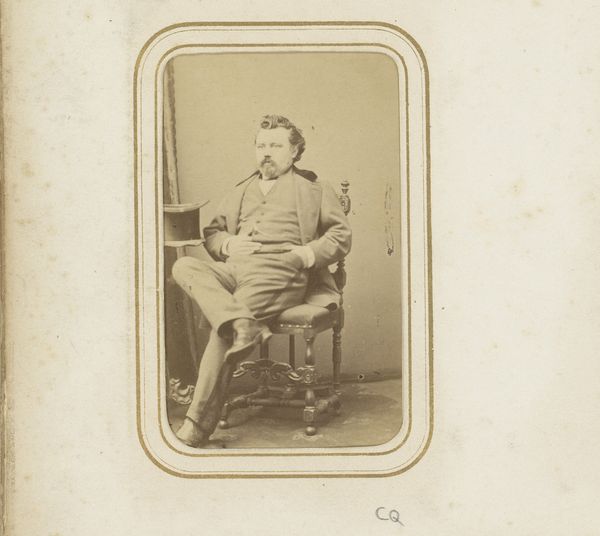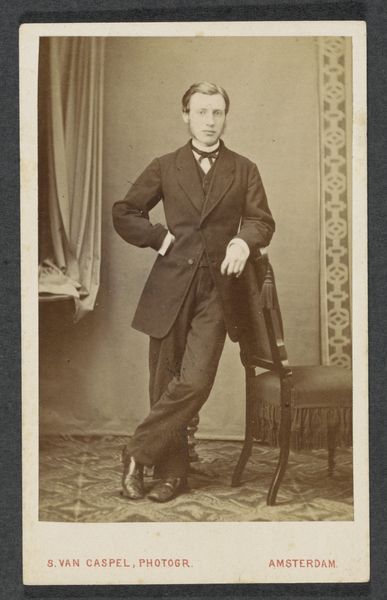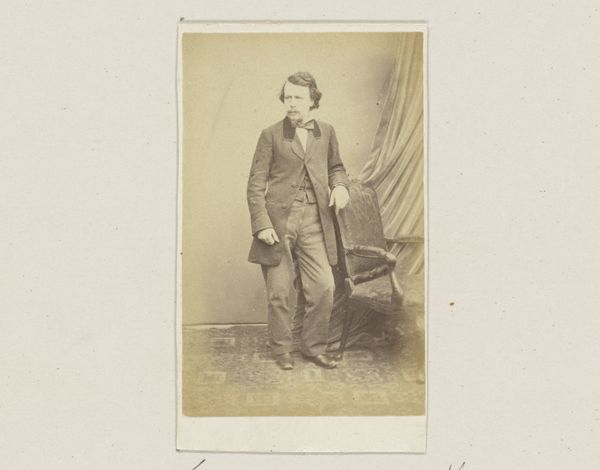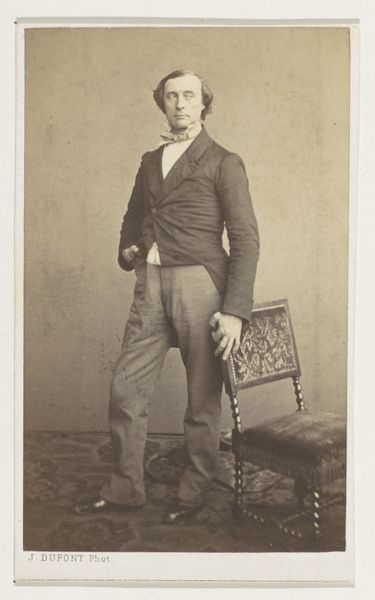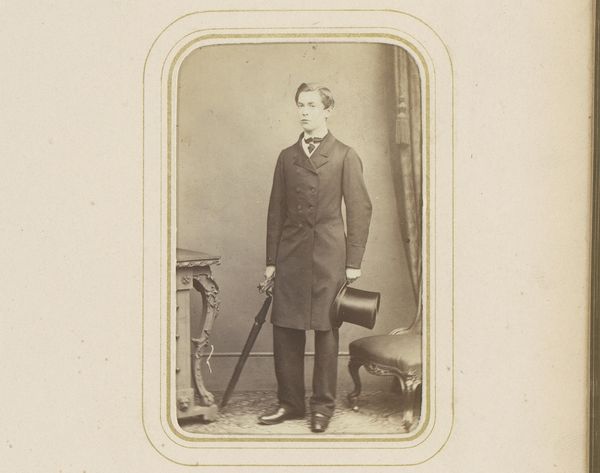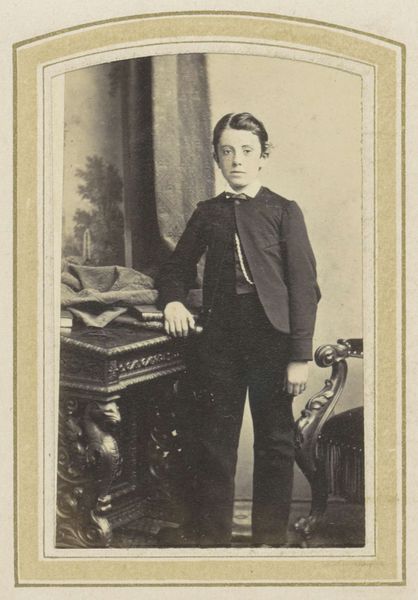
daguerreotype, photography
#
portrait
#
print photography
#
daguerreotype
#
photography
Copyright: Public Domain
Editor: This daguerreotype, "Le petit Russe," was captured by Pierre-Louis Pierson in the 1860s. The boy’s stare is captivating. I'm curious – what's the story that you see unfolding within this early photograph? Curator: Indeed, the gaze holds a powerful key. This image is awash in semiotic signals— the cap, the boots, the book—objects meant to declare identity, particularly national and class identity, through very specific cultural symbols. Consider the intentionality behind each element, likely constructed, consciously, as signs. Does the boy embody what he signifies, or merely perform it? Editor: Perform it? You mean, it’s staged? It feels quite… natural. Curator: Precisely. Think of "performance" not as inauthentic, but as the very act of *becoming*. In this context, the "Russianness" may be less about his actual origin and more about the projected, romanticized vision of a "Russian" identity through clothing and props. Ask yourself, what stereotypes are being employed here? Are these stereotypical garments usually worn together or separated? Editor: So the image uses Russian markers as symbols, to convey… an idea? Curator: Exactly. Photography in its early years often operated in this symbolic register. And consider the absence of overt action. He merely *holds* the book. He *wears* the cap. The potential narrative rests in those charged details, reflecting then, informing now. Editor: This is so interesting! I’ll definitely consider how historical and cultural identities were visualized and circulated in photographic portraits like these moving forward. Thanks for shedding light on all these subtle layers!
Comments
No comments
Be the first to comment and join the conversation on the ultimate creative platform.
